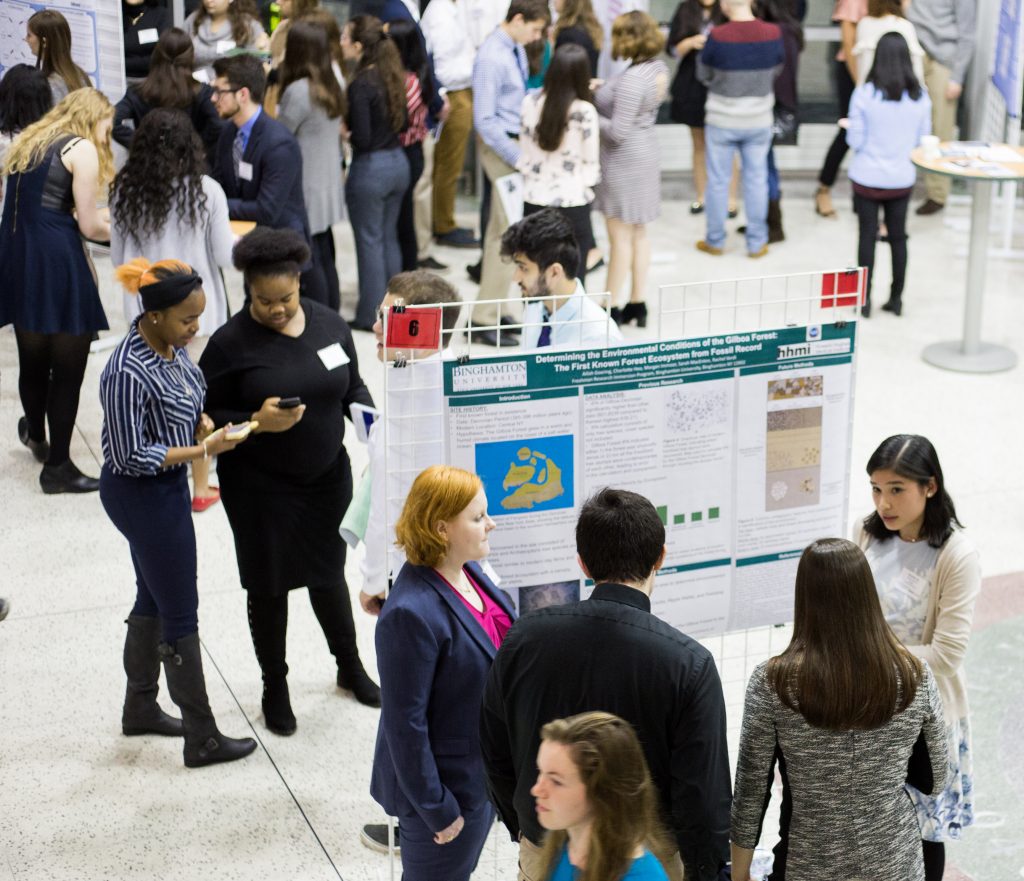
Presenting research on topics ranging from algae to earthquakes, approximately 500 underclassmen showcased their work on Wednesday night as part of the Freshman Research Immersion (FRI) program at Binghamton University.
Freshmen and sophomores involved in the program gathered in the Innovative Technologies Complex to share their projects, which take place in a variety of disciplines and fields, or “streams,” including smart energy, biogeochemistry and neuroscience.
The FRI program is three semesters long and credit-based, with the first semester focusing on reading scientific literature and analyzing data. The second and third semesters consist of hands-on research. According to Lua Lopez Perez, research educator for the ecological genetics stream, having the ability to do research as an underclassman is rare, but beneficial.
“It’s a great opportunity to figure out if it’s something appealing to you earlier than later,” Lopez said.
Through its research opportunities, the program aims to give freshmen and sophomores an advantage in STEM disciplines. According to Megan Fegley, director of FRI, underclassmen who are given the chance to learn research and presentation skills have a competitive edge when applying for internships and jobs.
“Early research experience through FRI can lead to more advanced research opportunities as juniors and seniors, as well as advanced summer opportunities such as industrial internships or summer research fellowships,” Fegley wrote in an email.
BU initiated the program in 2014, and since then, it has grown from three research streams to 10. Each stream is headed by a research educator in an aligned discipline, along with several faculty sponsors.
At the showcase and poster session, students in multiple streams got the chance to share their work with faculty and peers. Jason Provanzano, a freshman majoring in physics, said he studied hyperspectral remote sensing in the detection and monitoring of harmful algal blooms. He was prompted to start the program after an algal bloom spread rapidly in Florida in August, quickly threatening the lives of marine animals and humans.
Nicole Anichich, a sophomore majoring in integrative neuroscience, completed research on induced seismicity in Oklahoma through fracking. By using the statistical methods, her team was able to map significant results on where earthquakes were predicted to occur. Anichich said there are a lot of benefits to entering the FRI program.
“You really see how much work and effort you have to put in,” Anichich said.
Natalia Romanzo, a sophomore majoring in environmental studies, said her research for this poster session had a part in determining her career path. After studying methane-emitting oil and gas wells in New York, Romanzo said she wants to continue the research for her senior thesis. She hopes to work with the Environmental Defense Fund, an organization that focuses on sustainability and curbing greenhouse gas emissions.
“It’s given me tools for my future,” Romanzo said.


